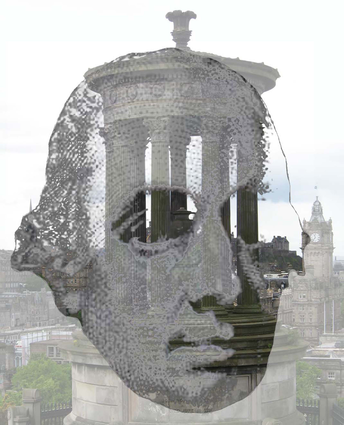Dugald Stewart1753–1828
Stewart, together with Thomas Brown and Hamilton carried Reid’s torch of common-sense philosophy. All taught at Edinburgh University and Stewart occupied the chair of moral philosophy. He suitably summarized the common-sense position: “The Physiological Theories which profess to explain how our different mental operations are produced by means of vibrations, and other changes in the state of the sensorium, if they are not altogether hypothetical and visionary, cannot be considered, even by their warmest advocates, as resting on the same evidence with those conclusions which are open to the examination of all men capable of exercising the power of Reflection”. Stewart made many of Reid’s ideas accessible to a wider readership; he was noted for his elegant writing but not for his originality. Stewart was a strong advocate of the ‘philosophy of the human mind’ which was “a science, so interesting in its nature, and so important in its applications, that it could scarcely have failed, in these inquisitive and enlightened times, to have excited a very general attention”. Nonetheless, he complained that it had suffered from the “unprofitable disquisitions of the school-men”. Stewart argued that there was a small number of faculties the study of which would yield general laws, after the manner of physics. The facts, accumulated by observation and reflection, should not be interpreted in terms of any putative physiological processes, as Hartley had attempted. Moreover, the philosophy of mind should not draw upon the methods of physics or of any other branch of science. Stewart elaborated Reid’s ideas and presented them in more amenable form, but he added little to them. The preface to a new edition of his Elements of the Philosophy of the Human Mind, published thirty years after his death, commenced somewhat disarmingly thus: “Though Dugald Stewart has not added many new truths to the Philosophy of Mind, and has hardly attempted to solve its more abstruse and intricate problems, he has done much to render it intelligible, popular, and useful”. Stewart was held in high regard by his fellow citizens of Edinburgh, and after his death they erected a monument in his honour: the Dugald Stewart monument on Calton Hill in Edinburgh. It was built in 1831 and occupies a commanding view of the city. Stewart is shown together with the monument and the view it commands.
